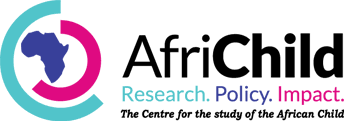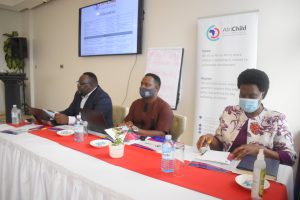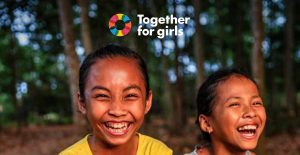Early childhood development (ECD) is key to a full and productive life and progress of a nation. It refers to the many skills and milestones that children are expected to reach by the age of five. These milestones include learning how to run, how to talk using simple sentences and how to play with others. In most cases, this type of development occurs naturally when parents and children spend time playing or reading books together. Kindergartens /preschools provide activities based on ECD guidelines.
According to the World Health Organization (WHO), early childhood is a time of remarkable physical, cognitive, social and emotional development.
“The early years are critical, because this is the period in life when the brain develops most rapidly and has a high capacity for change, and the foundation is laid for health and wellbeing throughout life,” partly reads a statement off the WHO website.
STAGES OF DEVELOPMENT

During the first year of a child’s life, physical milestones are centered on the infant learning to master movement, hold objects and hand-to-mouth coordination. From birth to three months, most babies begin to clench hands into fists; tug and pull on their own hand and repeat body movements, among other things.
From three to six months, babies gain greater agility and begin to: roll over, pull their bodies forward, shake and play with objects and bring any object they are holding into their mouths.
From six to nine months, children become increasingly mobile. They usually begin to crawl, grasp and pull an object toward their own body and transfer toys and objects from one hand to another.
From nine to 12 months, children develop more advanced motor skills. They begin to sit unaided; walk without help and stand without assistance.
From one to two years, children become increasingly independent. Here, they are able to: move and sway to music; walk backwards; scribble with markers or crayons and turn knobs and handles.
Between two to four years, children become increasingly adept at activities that require coordination and speed. They begin to manipulate clay into shapes; throw and catch ball; ride a tricycle; pull and steer toys and build tall towers with toy blocks.
From four to five years, they can jump on one foot; do somersaults and cut paper with scissors.

INVESTMENTS
When investments are made in mothers and young children, children’s risk of dying under the age of five is reduced, they stand a better chance of doing well at school and they are also more likely to break the intergenerational cycle of poverty.
However, in Uganda, only a tenth of children between 3 and 5 years are enrolled in formal pre-primary education. Preschools are predominately privately-run and located in urban areas. Community-based ECD centres receive little state funding, are under-equipped, often lack the bare essentials such as clean water and toilets, and are managed by untrained volunteers.
Investing in the early years is not only in the best interest of children, but is also key to developing human capital. Young children have rights, and early childhood programmes are one instrument to guarantee that these rights are respected. Uganda’s future as a middle income country depends on providing the tools for upward mobility and building an educated and skilled workforce. ECD is the most efficient way to accomplish this goal.
As a signatory to the global and regional frameworks and standards on the rights of the child, Uganda is committed to ensuring that all children in the country realize their full potential. This commitment is reflected in the formulation of the National Integrated Early Childhood Development Policy (NIECD) and Action Plan of Uganda launched in 2016. The NIECD Policy of Uganda addresses the need for timely reach of essential ECD services and support for all children, responding to diversity, engagement of parents and families as partners, and harmonizing and maximizing investment across the respective ECD sectors. The NIECD policy of Uganda presents the vision, objectives and goals summarized below.
VISION: All children in Uganda from conception to 8 years grow and develop to their full potential.
MISSION: To ensure equitable access to quality and relevant ECD services for holistic development of all children from conception to 8 years.

What should be done to take Early Childhood Education to the next level?
- Expand professional development and ongoing support of Early Childhood Education (ECE) service providers and actors.
- Community sensitization regarding ECE (many still believe school before primary is a total waste of time).
- Incentivizing on-time enrollment in preprimary school could help address the significant problem of early enrollment in preschool.
- Government should consider revising its current policy to increase financial allocation for preprimary education and providing targeted services to disadvantaged children who currently do not benefit from preprimary education
- Implementation and enforcement of inter-sectoral policies on Early Childhood Development Education interventions in health, nutrition, education, social and child protection especially targeting pregnant women young children and their parents/ caregivers across regions and socio-economic status. (NIECD policy 2016- 2020)






